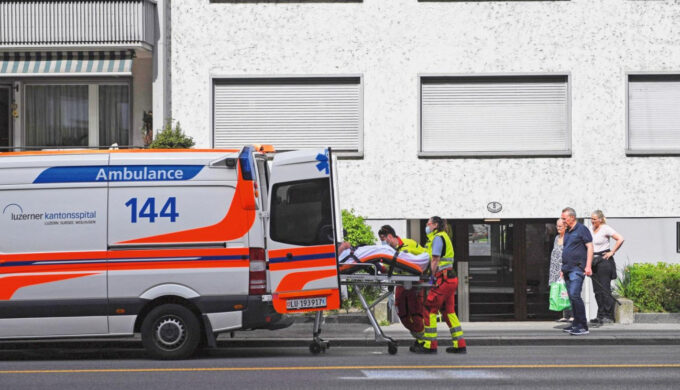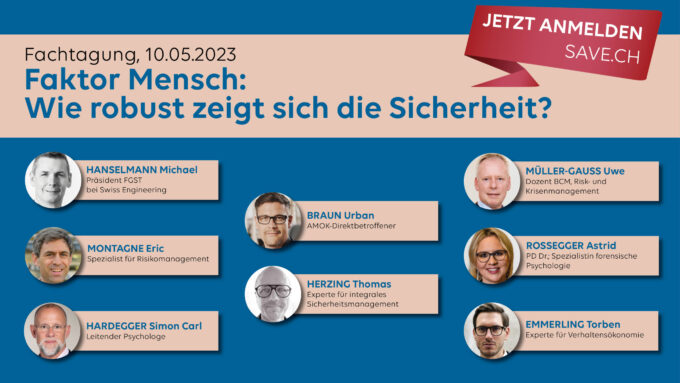Psychological influences
Hours later, after the application of a welding membrane, the roof covering caught fire. Apparently, there had been a failure to check the surfaces after the end of work for any further smoldering pockets of fire. The construction manager was found guilty. But has the guilty verdict really cleared up everything?

Industry 4.0 requires a holistic approach to occupational safety. It necessarily expands the focus of prevention to include human factors, i.e., the psychological factors that can lead to an occupational accident. In this context, the safety culture and the safety climate play a decisive role.
Safety culture and climate
The safety culture is formed from two components, the psychological as well as the organizational. It reflects the general interest in and understanding of prevention in a company as a whole. The safety culture thus reveals, among other things, the extent to which the conviction is pronounced that basically every hazard can be controlled preventively. Last but not least, it shows how open the company is to preventive improvements and how willing employees are to participate.
The safety climate prevailing in the team is derived from the safety culture. It forms the milieu in which occupational safety prevention takes place. The safety climate should particularly promote attention to human factors. Psychological as well as organizational risks are specifically included in prevention. How does this work in practice?
If all organizational matters such as regulations and instructions have been properly observed, if the planning and control structures are functioning, if force majeure such as rain, lightning or storm is out of the question, what then led to the personal accident? If those responsible ignore the psychological factors of human action in their analyses, they are faced with an unsolvable riddle. Ultimately, they come to the conclusion: human error. The case is then considered finally solved and filed away.
But beware! If the psychological causes are left in the dark, the human failure will repeat itself sooner or later. Therefore, it is essential to ask what all could have led to so-called human failure? Were they:
- Suspended attention
- Perception error
- Memory gaps
- Errors
- Knowledge deficiencies
- Operating error
- Conflict Moods
Often, it is also a matter of psychological traits such as fearfulness and recklessness. Last but not least, organizational factors with a psychological impact must be taken into account.
Fear of failure leads to stress
Fear of failure is the fear of making mistakes. It occurs in many areas of life. It manifests as nervousness, discouragement or stress. Associated with it are difficulties to relax. With fatal effects on the heart and stomach. At work, fear of failure can lead to misconduct and be indirectly responsible for accidents.
Rapid onset of anger or excessive irritability indicates a vehement fear of failure in a person. Worse, being seen as a failure by colleagues reinforces the syndrome. As a result, an individual can put a significant strain on the working atmosphere of the entire team. The fear of failure sometimes goes so far that affected individuals call in sick more often or even quit.
If managers suffer from fear of failure, they become more intolerant of their employees. They thus unnecessarily increase the pressure to perform. Then, to save time, for example, employees prioritize prevention over hazards. Often observed: In order to finish more quickly, the necessary fall protection is neglected at high workplaces.
Fear of failure is widespread, but often goes unnoticed. If a person suffers from it, he or she nevertheless need not be unsuited for his or her function. After all, fear of failure is not innate. Management can help affected employees shake off their fear of failure in a variety of ways. A psychological supervisor knows how to do this.
The pathological fear of failure originates in the mind. It is a reaction of the consciousness. That is where overcoming it must begin. Cognitive behavioral therapy begins by getting to the bottom of the suffering. It identifies the irrational thoughts that cause anxiety. Based on collected knowledge about it, it causes, e.g. by means of learned self-awareness, to overcome this weakness.
Recklessness and frivolity are a matter of the head
If someone knowingly ignores a hazard that is apparent to him, he is acting recklessly. There are many reasons for this. Not infrequently, it is a character trait that leads to rash, risky behavior. It is anchored in the psyche. Nevertheless, recklessness can be controlled by directing the will to such an extent that it does not degenerate into recklessness.
In prevention, care should be taken to ensure that recklessness does not turn into its opposite, namely fearfulness. This would have fatal consequences for a reasonable willingness to take risks and make necessary decisions in a timely manner.
When it comes to the causes of an accident at work, a premature plea of recklessness should never be made. Even if there seem to be clear indications of this. In fact, it may be organizational inadequacies in the work process or in the management structure. If they are concealed, they continue to have an effect.
Recklessness never happens intentionally, like sabotage. Unconsciously, reckless people suffer from a cognitive distortion of their perception. They overestimate their abilities while ignoring the risks associated with their actions.
Are people with this characteristic fundamentally unsuitable for risky functions? That varies greatly from person to person. Employees not only change physically over the years, their personalities also develop. A study shows that character traits are not as stable as is often assumed. About every ten years, everyone changes more or less noticeably, often becoming more reasonable. This development can be promoted psychotherapeutically.
Whether a person's recklessness should be treated individually must be decided by the management together with a psychotherapist. It also depends on the conceivable damage that can occur as a result of carelessness. If a waiter acts carelessly when clearing dishes by piling too many on top of each other, in the worst case china breaks. Driving a car with alcohol in the blood would be assessed differently.
The most effective prevention against recklessness is a safety climate in which employees look out for each other without taking offense. If, for example, someone uses his cell phone while walking, another person should be able to draw his attention to the danger without being ridiculed as a busybody. After all, even trivial matters contain a considerable risk potential. Everyone should be made aware of this: An accident at work affects everyone in the team in one way or another.
Conclusion
Occupational accidents result from a collective failure in prevention. Decisive measures were already neglected in the run-up or momentous mistakes were made during the work process.
Assigning blame clarifies legal liability and responsibility. The primary causes, however, remain unaffected. It is of no help at all to attribute responsibility to a single person.
In all occupational accidents, people are always both the cause and the victim. Their actions are determined by their awareness. This is where prevention should start.


















